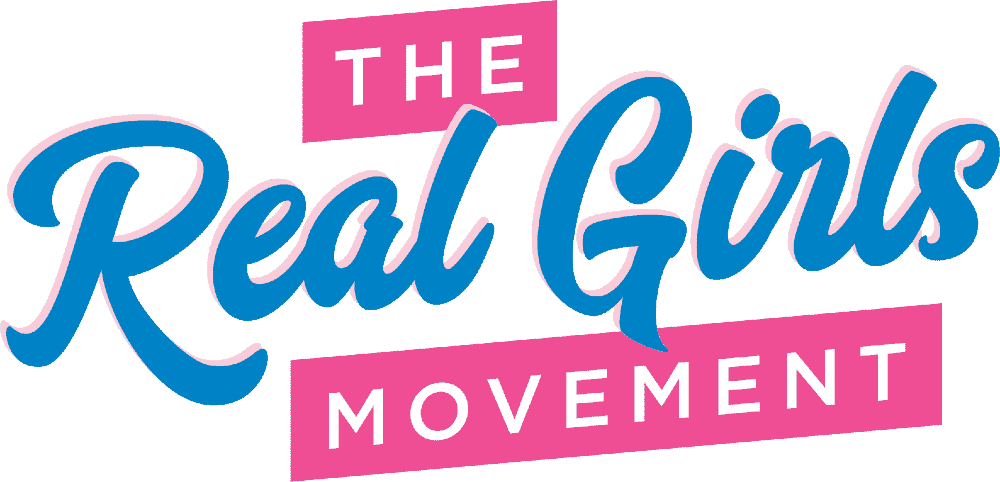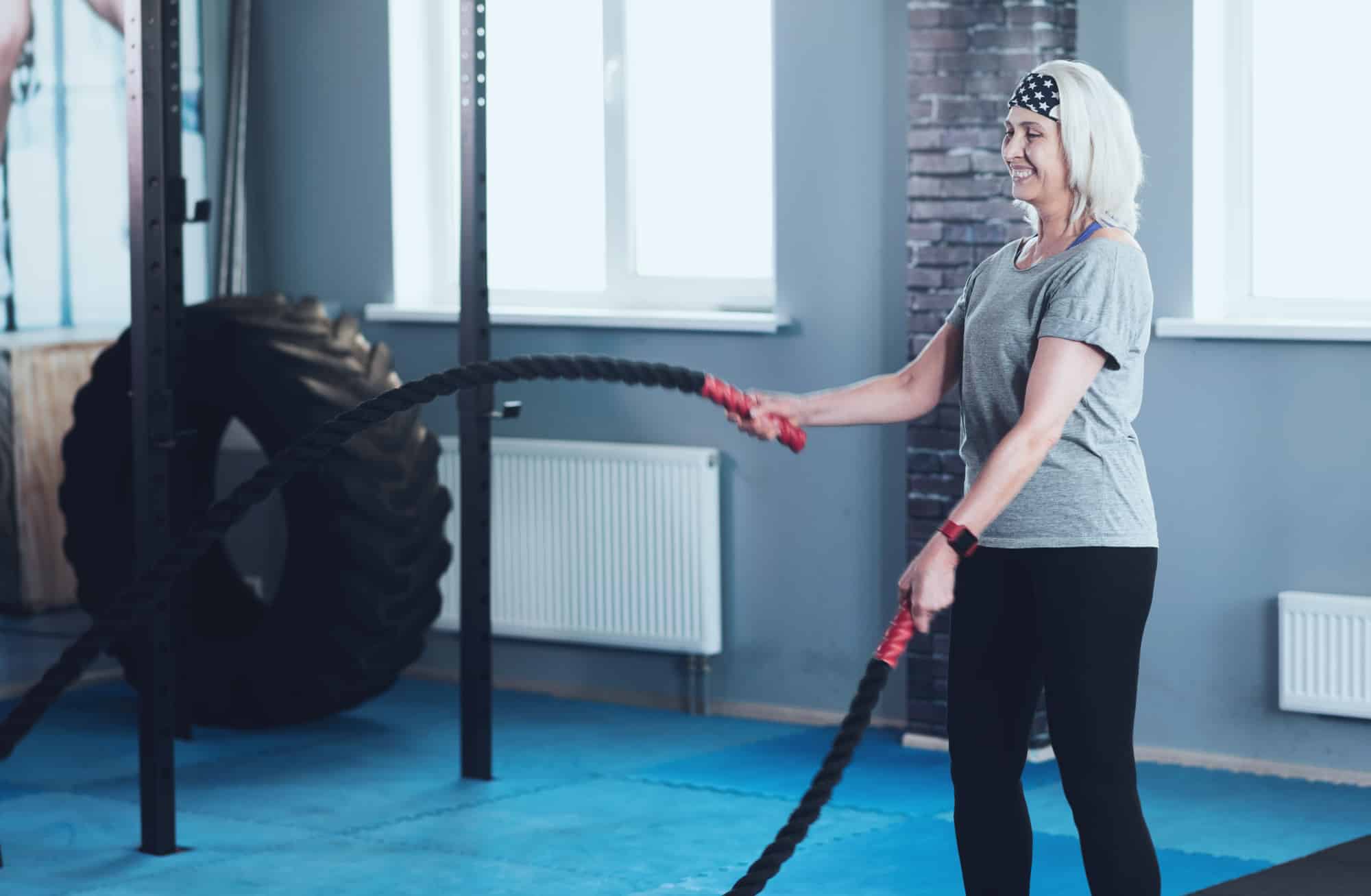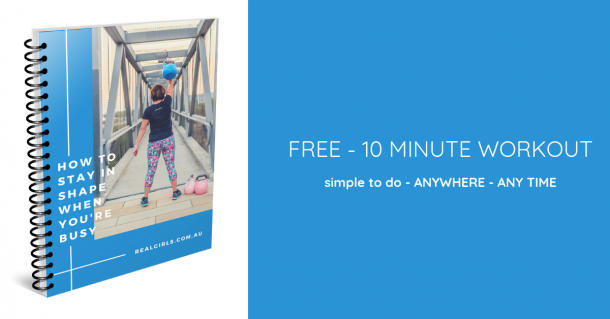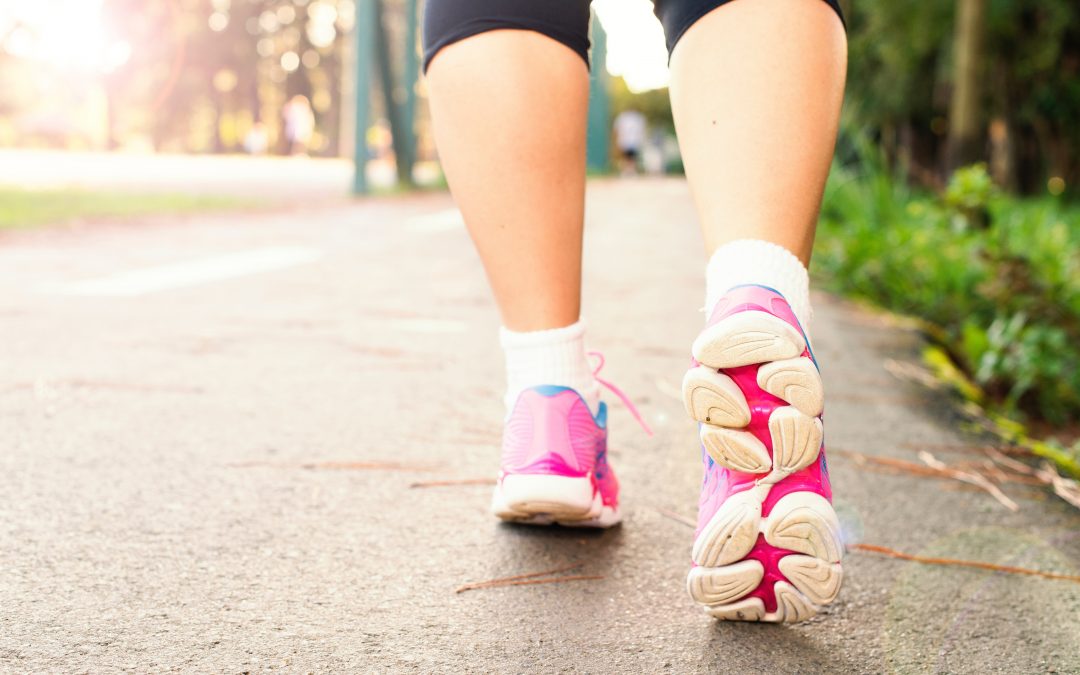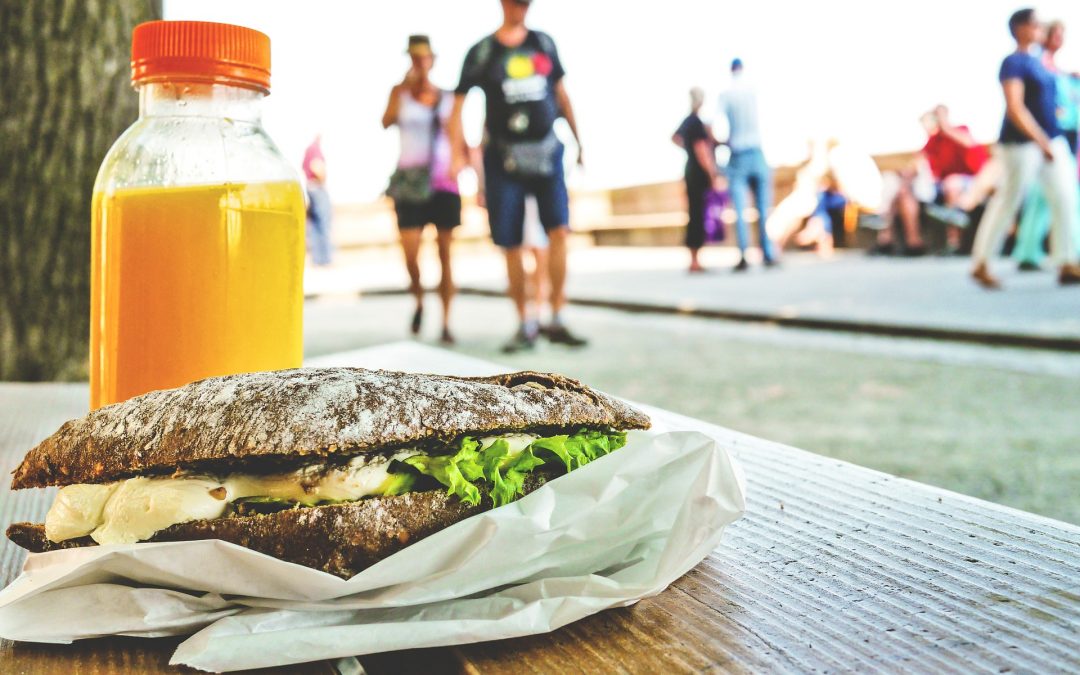If you follow the fitness industry, you’ve probably heard of the benefits of HIIT (or High Intensity Interval Training).
I am often asked by my Real Girls, what type of workouts should they be doing especially once they hit their 40’s and beyond. HIIT workouts can be a great workout to add to your weekly exercise schedule, however they often aren’t implemented correctly and / or are completed way too frequently.
These short, yet powerful workouts are touted as the ‘best way’ to improve your overall conditioning, burn fat, and even balance hormones! (but that’s another article!)
In this post we’ll explore the HIIT workout, which is still very popular, but perhaps a little misunderstood.
So, what is HIIT anyway?
HIIT workouts involve working at an intense effort level for a short period of time followed by short recovery periods.
High Intensity Interval Training is a training strategy alternating short bursts of anaerobic activity (80-95% of HRmax) with active or passive low intensity recovery (40-
50% of HRmax).
Recovery is critical in an HIIT workout and can be implemented in a number of ways. Some examples of rest to work ratios include can include 3:1, 2:1, or 1:1, however this can vary based on the fitness level of the individual, the duration of the work period, and the duration of the overall workout. Recovery is often overlooked by trainers claiming using HIIT workouts, instead implementing HVIT (High Volume Intensity Training) workouts with minimal rest.
For example, in a HIIT workout:
- a 1:1 ratio might be a 1-minute effort above 65% of HR max coupled with 1 minute of active (40-45% of HR max) or passive recovery.
- a 2:1 ratio might be a 30 second effort above 65% of HR max coupled with 1 minute of active (40-45% of HR max) or passive recovery.
HIIT ratio’s follow strict time frames with recovery times often equal and sometimes greater to effort.
- Intensity should be hard or very hard >85% of estimated HRmax
- Recovery should be comfortable or 40-50% of estimated HRmax
Tabata workouts are one example of a High Intensity Interval Training style workout.
A Tabata session involves 20 seconds of intense all-out effort, followed by 10 seconds of recovery. This is repeated 8 times through for a workout total of 4 minutes only and is said to promote fat loss and increase aerobic power – all in a very short period of time.
Seems a little too good to be true…
But, is HIIT really all it’s cracked up to be? And does it actually burn fat or is that just a myth?
When it comes to the research, the answer is YES!
One study compared MICT (Moderate Intensity Continuous Training) vs. HIIT and the effects that it had on visceral abdominal fat. The study found that both types of training reduced overall body fat; however HIIT did this in half the time. Half the time!! [1]
Another study from the International Journal of Obesity compared 2 groups of exercisers to determine the benefits of High Intensity Interval Training for women. [2]
The women were divided into two groups: the first group did 40 minutes of steady state aerobic exercise for 15 weeks. The second group did 8 second sprints followed by 12 seconds of recovery for 20 minutes.
The results of the HIIT study?
HIIT participants lost up to 7.3lbs (3.3kg) and the steady state exercisers gained up to 2.7lbs (1.2kg). HIIT participants also saw significant reduction in overall body fat as well as subcutaneous abdominal fat – the is the fat just beneath your skin.
Other key benefits of HIIT
- Reduces fasting insulin levels and decreases risk for Type 2 Diabetes and heart disease
- It significantly improves your cardiovascular fitness. The International Journal of Obesity Study also found that HIIT participants improved their VO2 max (aerobic power) by up to 23% [2]
- It balances your hormones! Research shows that high intensity exercise boosts Human Growth Hormone (HGH), which is a powerful anti-aging hormone that helps us maintain lean muscle mass (think revved up metabolism!) AND bone density, which reduces risk of osteoporosis. [3]
- It’s easy to fit into a busy lifestyle since it doesn’t take a lot of time.
- They’re portable. You can get an effective HIIT workout using minimal or no equipment whatsoever which makes it great for staying in shape while you’re on the road.
How often should you do HIIT workouts to achieve these results?
Due to it’s high intensity, HIIT is not for everyone. It is recommended that HIIT is only introduced after at least six months of consistent exercise. During this time you should be completing a mix of cardio and resistance training across five days a week.
“At this point you can replace one cardio session with one or two shorter HIIT sessions, separated by two sleep cycles.” [4]
Read that again ‘separated by TWO SLEEP CYCLES’. If we want to gain the benefits of TRUE HIIT sessions (not HVIT), our bodies need to recover from these intense workouts. HIIT is not something we should be doing daily or for every work out.
HIIT workouts do have a lot of benefits however, and it has been documented that they only need to be done 2-3 times a week.
Because these workouts require such a high level of effort, they can put more strain on your joints. This can increase your risk of injury as well as increasing stress levels (for e.g. cortisol) if done too frequently.
Limit the time you spend with your heart rate above 90% maximum to 30-40 minutes per week and balance it with other workouts (e.g. moderate intensity cardio and strength based workouts). [4]
REFERENCES
[1] https://www.ncbi.nlm.nih.gov/pmc/articles/PMC5237463/
[2] https://www.nature.com/articles/0803781
[3] https://www.ncbi.nlm.nih.gov/pubmed/12797841
[4] https://www.lesmills.com/fit-planet/fitness/how-much-hiit/
